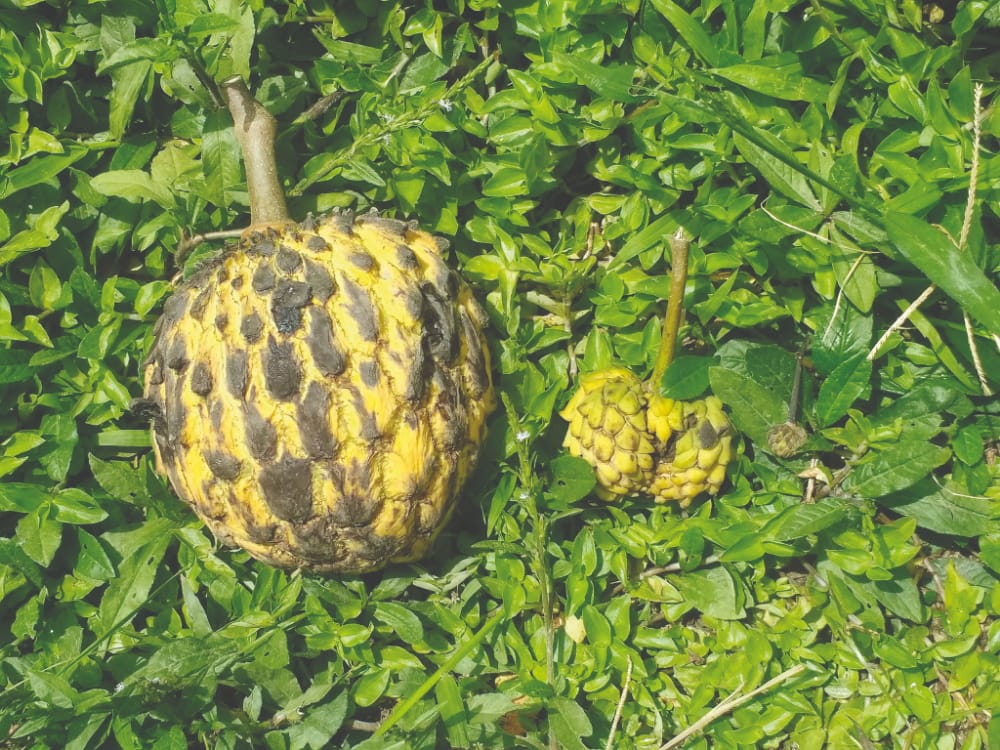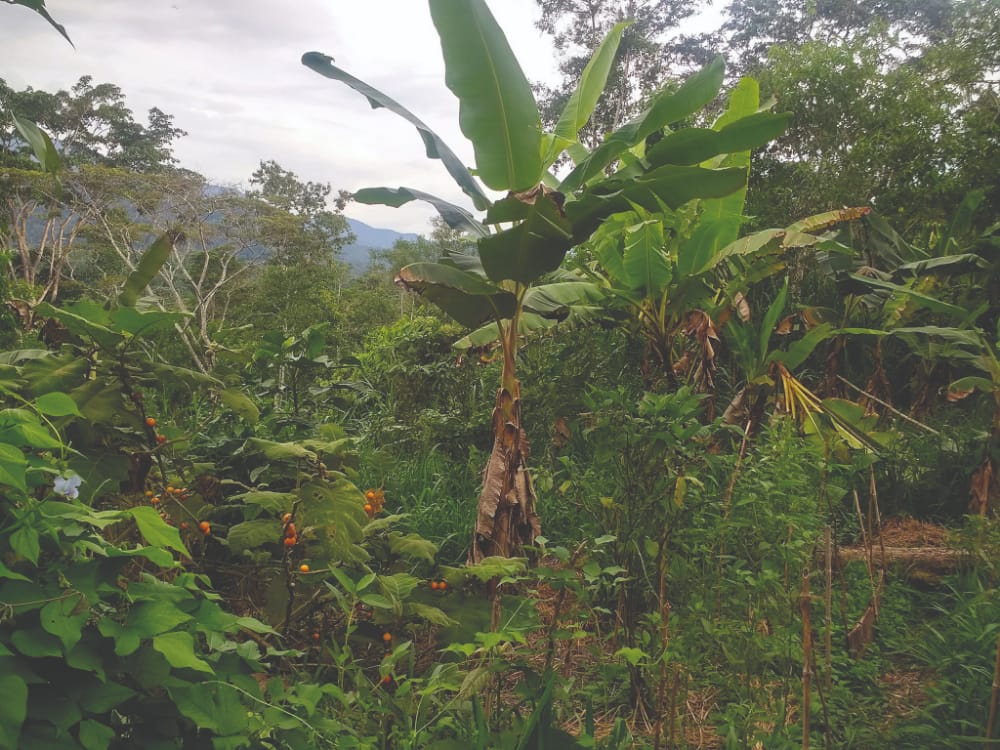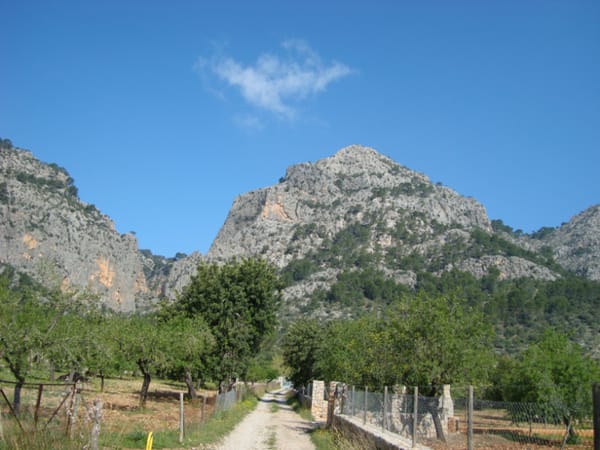From Imperial to the Amazon jungle

Instead of going into industry or staying in academia, recent maths BSc graduate Charlotte Pickering has chosen to move across the world to the Ecuadorian Amazon Rainforest to work on a permaculture fruit farm, where she’s living her best life. Here are some of her exciting adventures and the first challenges encountered in the tropics.
Oh God, where am I? All these trees look the same. The way up was easy (it was just, well, up). But now every direction is down, I can’t hear the stream anymore and I can’t see anything through these trees.” Sometimes in life, you find yourself someplace odd and you struggle to understand how you came to be there. This was one of those times for me – I was at the top of a mountain in the Amazon rainforest, completely alone, with a bag of cherimoya seeds in one hand and a machete in the other. The trees were thick; that place might even be primary rainforest – a rare thing to come across where I was staying, an area previously used for cattle farming, with neighbours who are digging for gold and planting cash crops. But our plans for the land, in comparison, were a little more ‘out there’, according to Ecuadorian standards.
Let me start from the beginning: I had arrived in Ecuador four weeks earlier – my plane landed in Cuenca, a city popular with American expats. I was headed to a community called Terra Frutis, who are trying to create a vegan permaculture fruit forest in the Amazon rainforest. Not wanting to waste time anywhere too ‘Americanised’, the next day I took a scenic yet frightening 4.5 hour bus journey from Cuenca to Gualaquiza in Morona Santiago province, a town at the edge of the Amazon rainforest. I passed over 20 places labelled ‘peligro’ – the Spanish word for ‘danger’ – as the bus wound around mountains across the Andes on roads that were yet to be completed. Back home I don’t take buses, only trains – not because I’m stuck up or frightened of buses, but rather because if the bus ride is over an hour long, I will throw up. And yet I somehow managed to survive this 4.5 hour bus journey featuring some harrowing drops. After a taxi ride from the bus station, I arrived at a house I had only seen in YouTube videos. I was immediately greeted by one of the men who had started the Terra Frutis community three years before, wandering through Peru and Ecuador until he eventually settled in this area.
“The rainforest is unforgiving – if you have any weakness, it will find it and make you suffer”
My trip wasn’t a holiday as such, more like a summer internship. Most people have internships in a bank or some other soul-sucking company, but that’s not the direction I want to take with my life. I used to love watching The Good Life, where the townies try to become self-sufficient, converting their gardens into veggie plots and making their own clothes, and the show inspired me to do the same – but better. I’m a big fruit lover, but the fruit in the UK is only passable, so I decided to move to Ecuador (which has a great climate for all sorts of fruit) and start a fruit forest. Thankfully for my bank account and sanity, it didn’t come to that because someone else had already started a fruit forest there, so I decided to join their community for a trial month.

So now back to Ecuador. I had just arrived in Tambo Viejo, where the headquarters for Terra Frutis are situated. I spent the first week and a half at the headquarters, a smaller scale version of the main project, only with electricity and the internet (coming soon to the farm!). Their ‘yard’ is full of fruit trees, sugarcane, and palms, backing onto a river suitable for bathing in. I spent a lot of my time weeding, which in Ecuador often involves cutting shoulder-height grass with a machete. The grass is then used as mulch for the plants. I also planted many pineapples and harvested noni, ugly lemons, and maracuyas. Tambo is a nice place but the real project is the farm, known as Mount Frutis because of its location on the side of a mountain, previously used for grazing cattle and not much else. There are a few ongoing jobs there: building bungalows and a community kitchen in preparation for the upcoming fruit festival; planting trees and seeds gathered from all over the world; clearing areas of grass; weeding and looking after existing plants; and maintaining the waterline that brings water from the stream to the kitchen. The community is trying to become self-sufficient and aims to avoid buying new things where possible, opting to make the things they need in most cases. Tools include a long pole with a plunger on top for harvesting papayas, a long pole with a sharp knife on the end for harvesting rollinias, and branches that bend back like a scythe for collecting the grass and other potential mulch.
So finally, we went to the farm – we needed to take a half hour taxi ride, then a boat journey, and an uphill walk through deep mud. This was the beginning of the dry season but the moisture from the rainy season hadn’t managed to escape yet. I got to the cabin (one of the seven buildings there) exhausted, had a short break, and then started planting some mangoes. At that point, my body was done, and I spent the next few days feeling faint and unable to stomach any food. The rainforest is unforgiving – if you have any weakness, it will find it and make you suffer. I somehow got back to Tambo, where I got some rest, managed to recover, and then spent my days eating cherimoya bought in town.

Cherimoya trees can grow in this climate but are unlikely to fruit – I wasn’t satisfied with this. I wanted to grow them at the farm, and so did others. However, the problem with growing cherimoyas out there is that the altitude isn’t high enough. So I decided that I would plant the seeds at the highest point of the farm – the top of the mountain. This area of the farm was not developed at all, there were no easy paths to walk around and only a handful of people living at the farm had been up there previously. It was an early morning, and, having soaked the seeds for four days beforehand, I scarified them against a rock to improve their chances of sprouting, and started my way up the mountain alone. I walked through tall grass, crossed a river, and then climbed through the thick rainforest. The trees were densely packed but I kept heading up.
After a while, there seemed to be no more up – the ground was flat, and because of the densely packed trees I couldn’t see whether it was going up or down in any direction. I seemed to be able to see small pieces of sky in every direction however, so I stopped to have a rest. A member of the community had given me a granadilla so that I could spread the seeds once I got to the top. I was hungry so I opened it up and ate the flesh, spitting the seeds into holes at the base of the trees around – that’s how you plant the fruit here! Granadillas grow on vines, so they need to be planted places with opportunities to climb up things. As I was walking around, I realised that in one direction the ground seemed to go down and then up again in the distance – perhaps I wasn’t at the summit yet? So I picked up my things and started moving there. It was difficult – that area was even more densely populated by trees. I got higher than I had been, before fallen trees blocked my path. Beyond them, I could see the ground evening off again so I assumed it to be the real summit.
“When they said a maths degree from Imperial can take you anywhere, I could have never imagined it would take me here”
I planted the cherimoya seeds all around and started to head downhill. I got to the place I was before, but I couldn’t remember which direction I had come from. I headed left, but with hindsight left was completely the wrong way to go – it began to take me away from the farm and into a neighbour’s property. Fortunately, I realised that partway down as I hit a stream flowing in the opposite direction to what I was expecting. And so I headed back up a little and then started to make my way around the peak. I couldn’t hear the incorrect stream anymore so I kept walking until I heard water... It was flowing the correct way, I must be in the right place! I headed straight for the stream, climbed down to cross it, and, upon realising that there was no easy way back up on the other side, I started walking down the stream. After a little while, I found a place to pull myself up the other side. Quickly, the trees turned to grass but I couldn’t recognise this place – had I ended up at a neighbour’s place anyhow? I recited “lo siento, estoy perdida” (“sorry, I am lost”) in my head and kept walking. I walked past a few banana palms until I started seeing buildings – I had made it back! I was higher up than when I first crossed the stream so I still had a decent victory walk back down to the kitchen. I arrived back triumphant, I had survived the Amazon rainforest!
The rest of the trip was more relaxed, mostly weeding at Tambo and spending time with the friends I’ve made. After getting used to this tropical paradise, I was dreading returning to England. But fast forward five months and I’m back! Not for a visit but to live. When they said a maths degree from Imperial can take you anywhere, I could have never imagined it would take me here.
If you’re also a fruit lover interested in volunteering in the Amazon, or a vegan with an interest in raw food and permaculture looking for a community to join after graduation, check out Terra Frutis at www.terrafrutis.com. For more information about the upcoming fruit festival, go to www.amazonianfruitfestival.com








